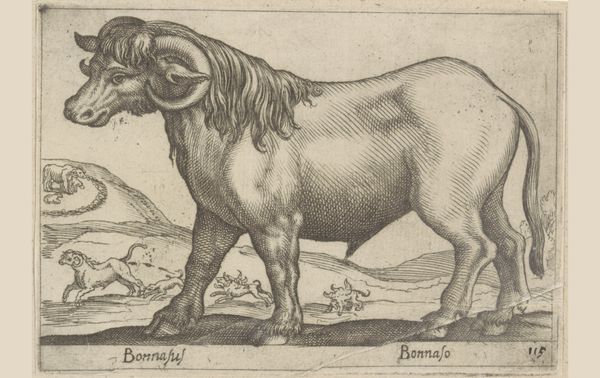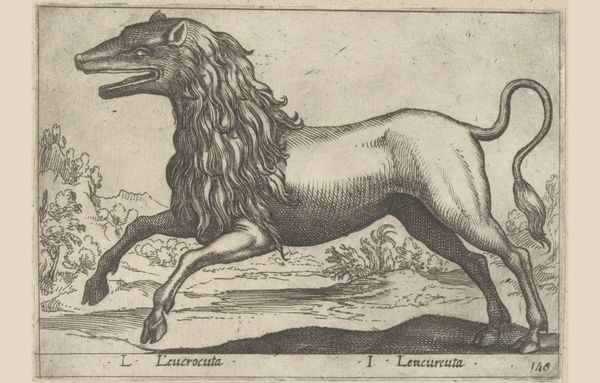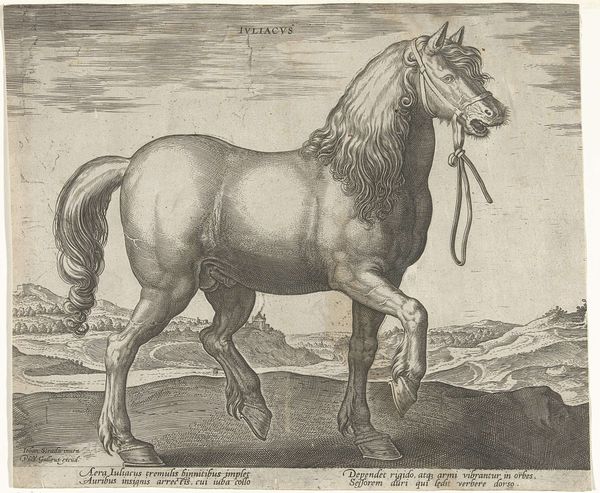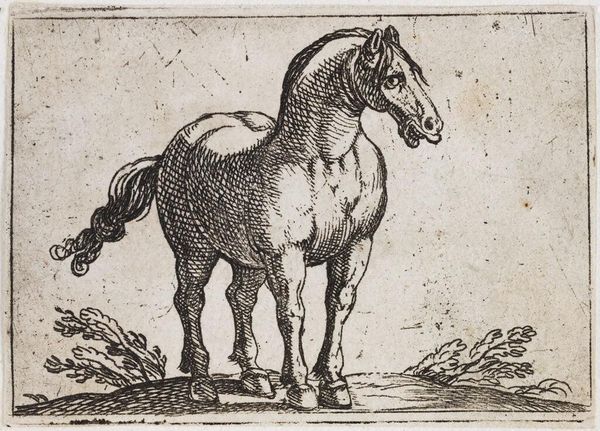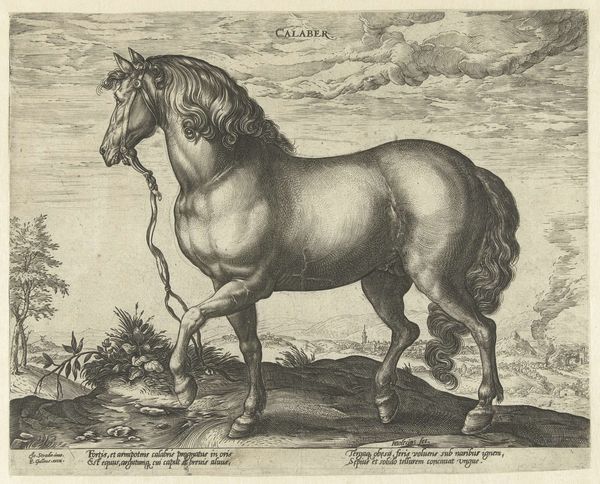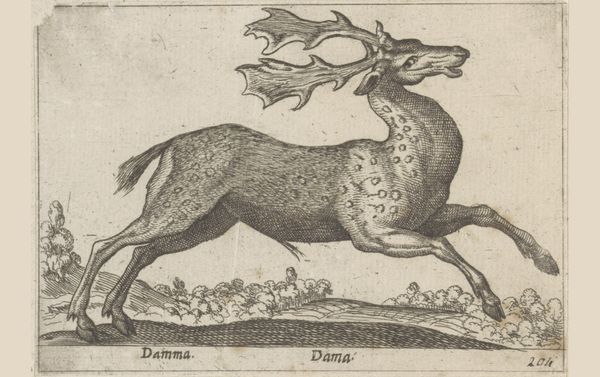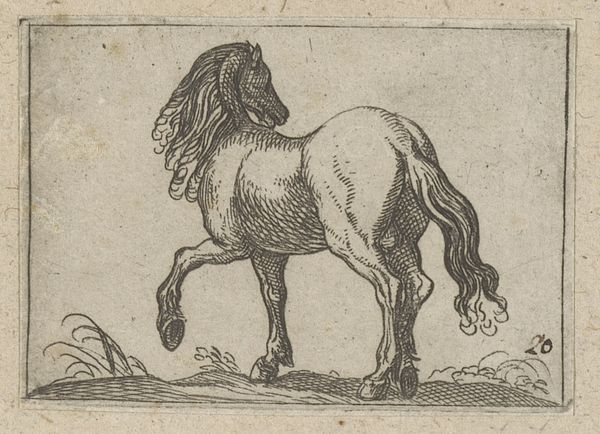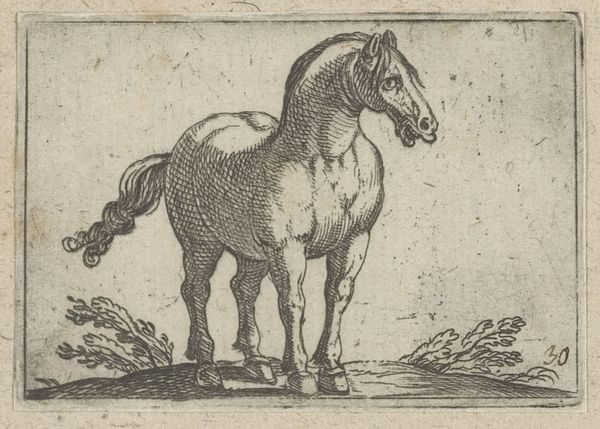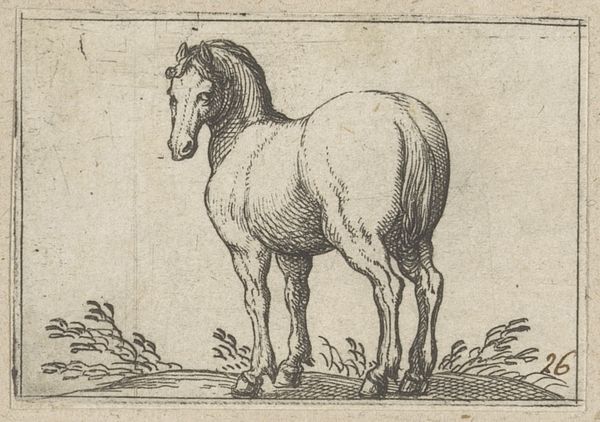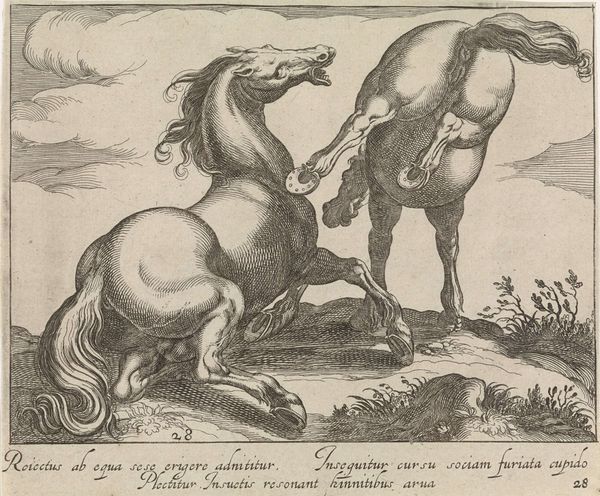
print, engraving
#
baroque
#
animal
# print
#
landscape
#
figuration
#
pen-ink sketch
#
line
#
engraving
Dimensions: height 95 mm, width 137 mm
Copyright: Rijks Museum: Open Domain
Antonio Tempesta made this engraving of a dromedary, or one-humped camel, sometime before his death in 1630. It's an image that reflects Europe's expanding knowledge of the wider world, fueled by exploration, trade, and colonization. But what does it mean to depict an animal from a distant land? In the 17th century, images like these played a role in shaping European understanding of the world. They were often based on second-hand accounts and mediated by existing cultural ideas. The Italian artist Tempesta probably never saw a dromedary in its natural habitat. Instead, he relied on descriptions and possibly other artists' interpretations. As art historians, we delve into these contexts. We examine travel literature, scientific treatises, and other visual representations to understand how this image participated in the construction of knowledge about the “exotic” in early modern Europe. This reminds us that art is always entangled with the social and institutional forces of its time.
Comments
No comments
Be the first to comment and join the conversation on the ultimate creative platform.
